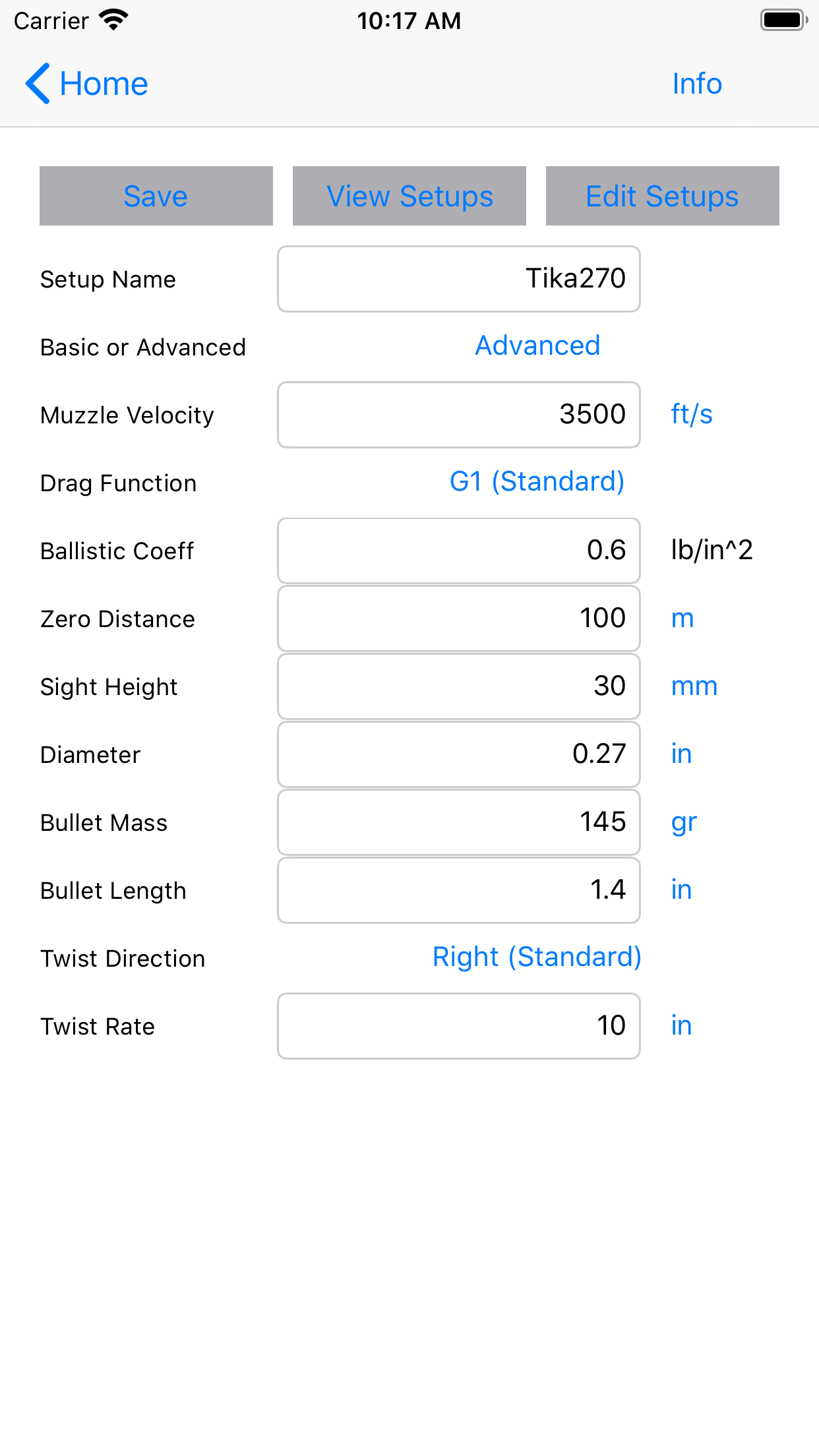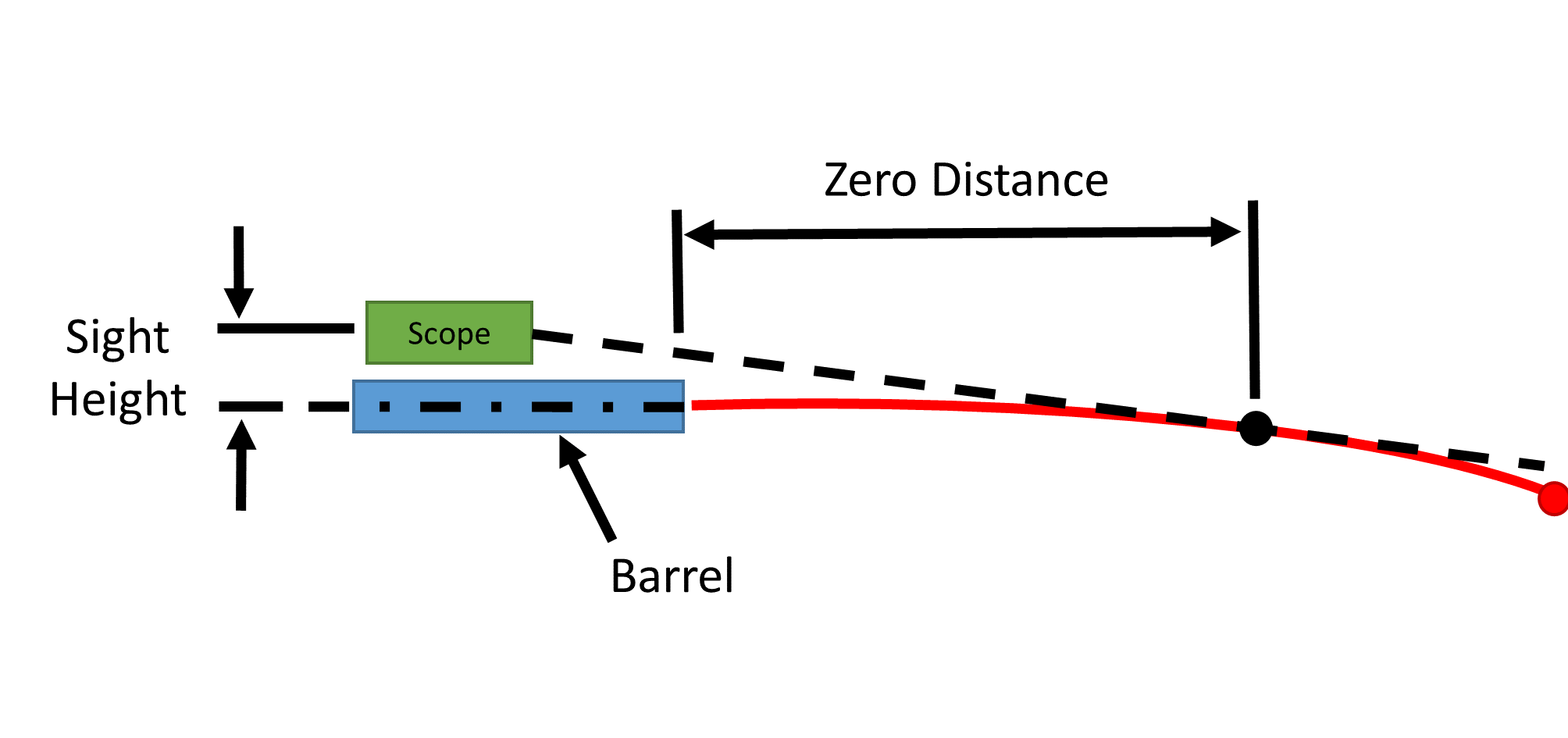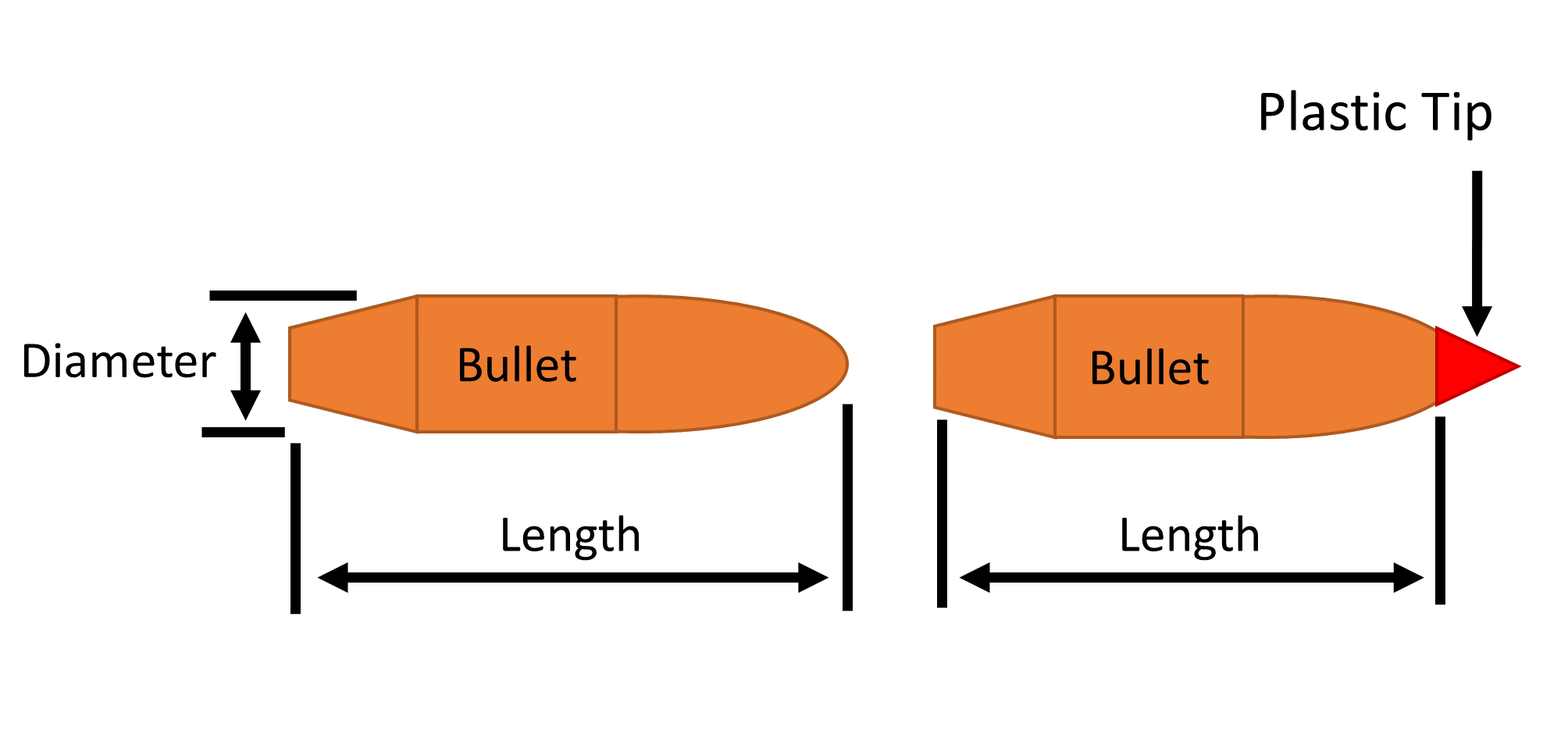 |
|---|
Rifle Setup Information
Rifle Name
Give each rifle setup a unique name. This name is used to find the correct rifle in the rifle toggle menu of the elevation and windage calculator
Basic or Advanced
The Basic mode considers the influence of gravity, drag (G1 function), distance, rifle angle, and wind. The Advanced mode extents the Basic mode allowing the use of different drag functions (G1 or G7), considers the influence of the air density (temperature, pressure/altitude, and humidity), and can include the Gyroscopic spin drift and Coriolis force.
Muzzle Velocity
The muzzle velocity is the velocity of the bullet as it leaves the muzzle of the rifle. This velocity is generally found on the ammunition packaging.
Drag Function
The drag function is used with the Ballistic Coefficient (BC) to determine the drag of the bullet. Typically the G1 drag function is used, but for long range application the G7 drag function may be more appropriate. The BC changes significantly for different drag functions, so be sure that you are using the correct BC for the drag function chosen.
Ballistic Coefficient
The Ballistic Coefficient (BC) is used with the drag function to determine the drag of the bullet. The typically documented BC is for the G1 drag function. To use a G7 drag function the BC may need to be calculated if the bullet manufacturer does not supply the G7 BC.
Zero Distance
The zero distance is the distance from the rifle to the target when the scope was zeroed (sighted in). We recommend zeroing your rifle at 100 m/yd.
Sight Height
The sight height is the shortest distance from the center of the scope to the center of the barrel.

Diameter (Calibre)
The calibre of a rifle is the bullet diameter given in inches (e.g. .243 rifle has a bullet diameter of 0.243 in). The bullet diameter is used for the calculation of the spin drift. If you do not wish to calculate the spin drift, enter any number
Bullet Mass
The bullet mass is the mass the bullet alone. The bullet mass may also be referred to as the bullet weight, but is still given in units of mass (grains - gr, kilograms - kg, grams - g). The bullet mass is used for the calculation of the spin drift
Bullet Length
The bullet length is the length of the bullet from the tip to the butt (not to be confused with the length of the cartridge). If the bullet has a plastic tip, the bullet length is taken from the butt of the plastic tip to the butt of the bullet (the bullet length excludes the length of the plastic tip). The bullet length is used for the calculation of the spin drift

Twist Direction
The twist direction is the direction in which the rifling inside the barrel rotates the bullet. If the rifling is in a clockwise direction (right) when looking down the barrel towards the muzzle, then the bullet will leave the rifle spinning clockwise: this is a right twist rifle (standard). The opposite (anticlockwise rifling) is a left twist rifle; however this is far less common. The twist direction gives the direction of the spin drift
Twist Rate
The rifle twist rate is given by a length, where the length corresponds to the length of barrel that gives one revolution in barrel rifling. For example, if a rifle has a barrel length of 22 in and the rifling revolves 2.2 times then the rifle twist is 10 in (22 in / 2.2 revolutions = 10 in). The rifle twist is used for the calculation of the spin drift
